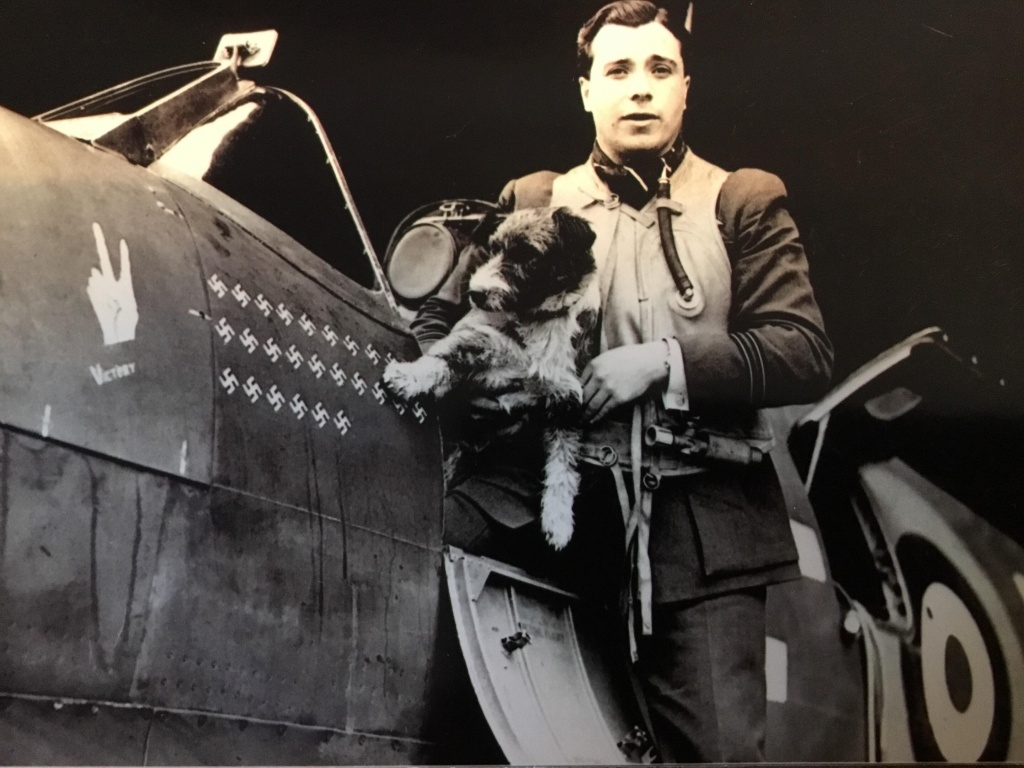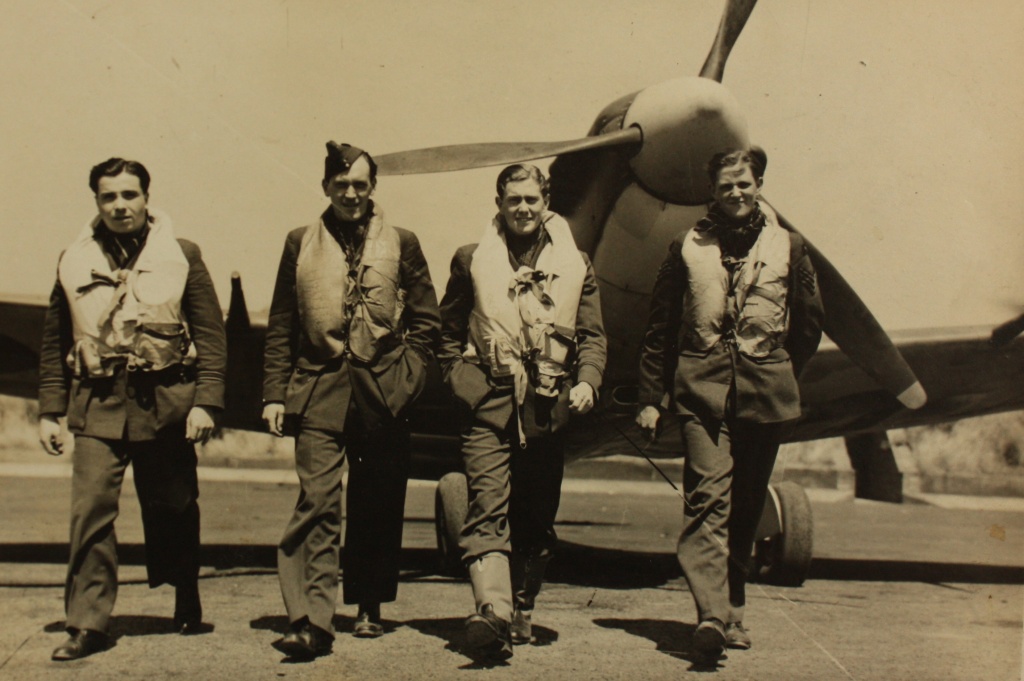A farmer’s son from Bomere in Shropshire, the diminutive Eric ‘Sawn Off’ Lock was destined to become one of Fighter Command’s most successful pilots during the early war period. A pupil at Shrewsbury School, in common with many of his fighter pilot peers, he excelled at sport – and loved speed. Fascinated by aviation and inspired by the gliding club operating atop Shropshire’s famous Long Mynd, in February 1939, the nineteen-year-old Eric joined the RAF Volunteer Reserve. When war was declared, he was called up in September 1939, and completed his Service Flying Training. Commissioned in June 1940, Pilot Officer Lock joined 41 Squadron at Catterick (not at Hornchurch in August, as incorrectly reported elsewhere). Having already seen action over Dunkirk, on 26 July 1940, 41 Squadron moved South, to Hornchurch – Eric having also married that month.

It became rapidly obvious that Pilot Officer Lock was an exceptional fighter pilot, claiming nine aerial victories between 15 August and 1 October 1940, this feat of arms recognised by a DFC. However, at first Lock’s claims, according to fellow 41 Squadron pilot Peter ‘Sneezy’ Brown, were doubted by his comrades – but having been brought up on a farm, shotgun in hand, the fact of the matter was that Lock was a natural deflection shot. Indeed, exhaustive post war research confirms that the majority of his claims were accurate. Those we are unable to confirm can simply be put down to the speed of combat deceiving the human eye, or an enemy aircraft recovering and managing to return home. In October 1940, a bar was added to his existing DFC in recognition of further successes.
In November 1940, Lock’s Spitfire was badly damaged by an Me 109, but although wounded he managed to safely crash-land at North Weald. Whilst hospitalised, in December 1940 his DSO was gazetted. Promoted to Flight Lieutenant, Eric then became a flight commander with 611 Squadron, still flying Spitfires at Hornchurch.

On 3 August 1941, Flight Lieutenant Lock was engaged on a ‘Rhubarb’ operation (a low-level nuisance attack by a pair of Spitfires on targets of opportunity) but, quite simply, disappeared. Even as late as 1983, the MOD was unable to furnish the Lock family with any further information. In 1999, however, I cross-referenced Fighter Command losses against German combat claims. Only one Spitfire was lost on the day in question: W3245, flown by Flight Lieutenant Lock. Only one enemy fighter was claimed destroyed by the Luftwaffe that day: a Spitfire destroyed over the French coast by Oberleutnant Johann Schmid of JG 26’s Geschwaderstab (Group Staff Flight). It was not unreasonable to suspect, then, that Schmid shot down Eric Lock, who crashed into the Channel, never to be seen again. In 1999, however, I had not the time of Schmid’s claim – which I now have: 1832 hrs, continental time. Today, we also have Eric Lock’s casualty file in the public domain, so we know that he took off from Hornchurch at 1445 hrs GMT – so could not have been shot down by Schmid.
On that fateful day, Lock’s wingman later reported that the Spitfire pair had crossed the French coast at Boulogne, at very low-level, Lock ordering him to keep above and behind him, thereby covering his tail from attack and enabling the leader to concentrate on finding a suitable target. Unfortunately the Spitfires became separated and the last heard of Lock was a radio message reporting that he was strafing German soldiers on bicycles. It was suggested that the missing fighter ace may have been hit by flak but there was ‘no direct evidence’, according to his Commanding Officer’s report of the following day. It is likely, though, that Lock was hit by small arms fire and crashed in the sea. Whilst we will never know, that would now seem the most likely scenario. Whatever happened, Flight Lieutenant Eric Lock DSO DFC was a brave and exceptional fighter pilot whose name is commemorated on the Runnymede Memorial to the missing – and yet another highly experienced and irreplaceable pilot lost on these senseless Rhubarb operations.
In 1999, I traced Flight Lieutenant Lock’s sister, Mrs Joan Statham, who still felt her beloved brother’s loss keenly and had preserved many items from Eric’s short but distinguished life. For me, it was a privilege to visit this lovely lady at her Shropshire home and see Eric’s medals and other personal items – and to place his image firmly on the front cover of my Battle of Britain: The Photographic Kaleidoscope Volume III, commemorating the 60thanniversary and including a number of previously unpublished photographs of Eric from Joan’s collection.
